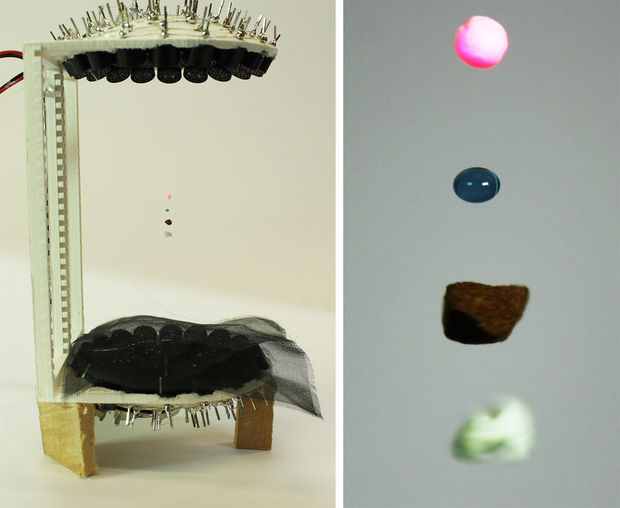- makeITcircular 2024 content launched – Part of Maker Faire Rome 2024Posted 2 weeks ago
- Application For Maker Faire Rome 2024: Deadline June 20thPosted 2 months ago
- Building a 3D Digital Clock with ArduinoPosted 7 months ago
- Creating a controller for Minecraft with realistic body movements using ArduinoPosted 7 months ago
- Snowflake with ArduinoPosted 8 months ago
- Holographic Christmas TreePosted 8 months ago
- Segstick: Build Your Own Self-Balancing Vehicle in Just 2 Days with ArduinoPosted 8 months ago
- ZSWatch: An Open-Source Smartwatch Project Based on the Zephyr Operating SystemPosted 9 months ago
- What is IoT and which devices to usePosted 9 months ago
- Maker Faire Rome Unveils Thrilling “Padel Smash Future” Pavilion for Sports EnthusiastsPosted 10 months ago
DIY Something Magic: Arduino Acoustic Levitator

Asier Marzo, Adrian Barnes, and Bruce W. Drinkwater have developed a 3D-printed, Arduino Nano-controlled acoustic levitator. Thanks to this device you can levitate tiny drops of liquid, small solids, or insects in mid-air.
Acoustic levitation has been explored in hundreds of studies for applications in pharmaceuticals, biology or biomaterials. It holds the promise of supporting innovative and ground-breaking processes. However, historically levitators have been restricted to a small number of research labs because they needed to be custom-made, carefully tuned and required high-voltage. Now, not only scientists but also students can build their own levitator at home or school to experiment and try new applications of acoustic levitation.
The principle is similar to the vibration you feel when next to a large speaker, but in this case, the homemade levitator employs ultrasonic waves to push particles without causing any damage to humans.
Their device uses two arrays of 36 sonic transducers in a concave pattern, which face each other in order to suspend objects like Styrofoam, water, coffee and paper in between. Several items can even be trapped at the same time, and liquid is inserted into the “levitation zone” via a syringe.
Required Components:
- 72x 10mm 40kHz transducers. Manorshi provides MSO-P1040H07T at a very good price, minimum order is 500 but they will ship with less at a higher price. Also Ningbo has good ones FBULS1007P-T
- 1x 3D-printed TinyLev support.
- 1x Arduino Nano
- 1x L298N Dual Motor Drive Board
- 1x 130x90mm sheet (wood or acrylic) for the base of the driver board.
- 1x power switch
- DC adaptor variable between 7V and 12V
- DC female connector
- Jumper wires
- 12AWG black and red wire
- 24AWG black and red wire
- 24AWG exposed wire
- Some Expanded Polystyrene beads to levitate (between 1mm and 3mm diameter)
- An acoustically transparent material: A metallic grid, very thin fabric or teabag paper.
For further information jump on the related instructables page.















